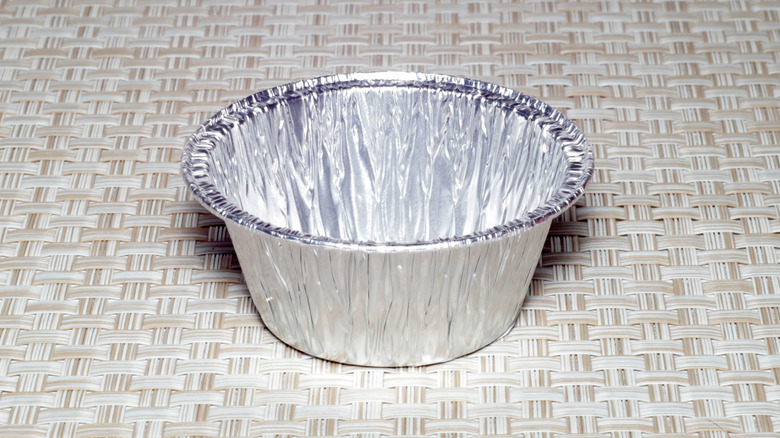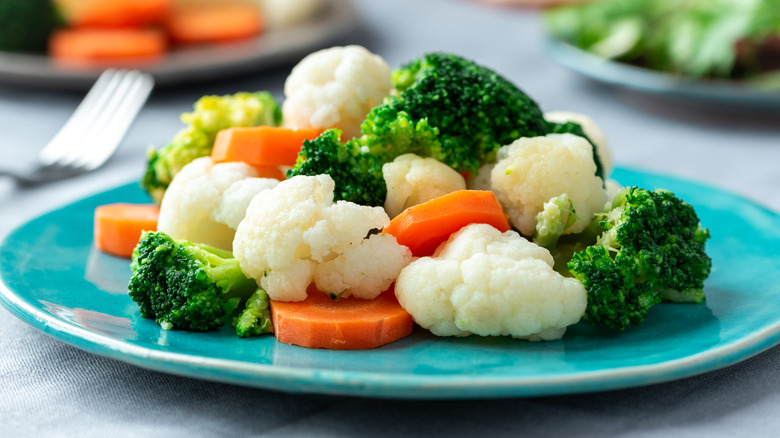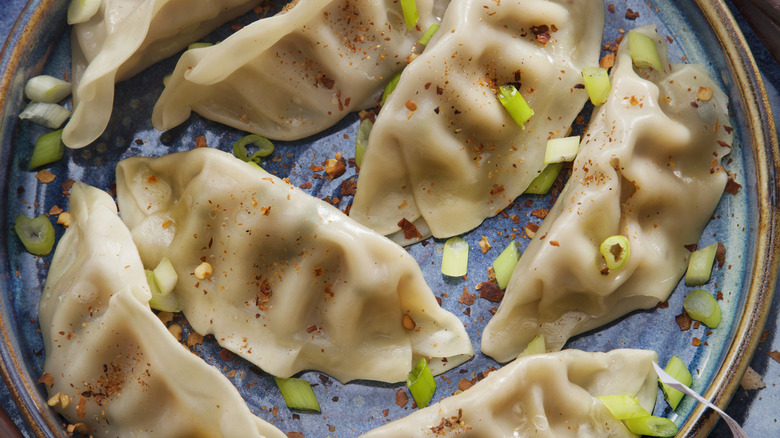How To Use An Aluminum Foil Pie Tin As A Makeshift Steamer
Steaming food is a simple technique that can unlock a range of textures and flavors in different dishes. The act of steaming is cooking using moist heat. The vapor from boiling water can cook a wide array of ingredients, including vegetables, meat, and dough. While steaming may feel like a daunting technique to try at home, there are ways to simplify the process. Steaming typically involves resting a steaming basket (which has gaps that allow steam to filter through) on top of a pot of boiling water. However, if you don't have a traditional steaming basket on hand, the solution to your problem may already be hiding in your kitchen. Aluminum pie tins can be transformed into crafty steaming baskets with a little maneuvering.
Take an aluminum pie tin and poke small holes in the bottom using a knife, skewer, or scissors to allow the steam to vent. To prevent your food from sticking to the pan, cut a piece of parchment paper to fit the pie pan and poke a few holes in it as well, similar to the small paper bottoms you'd find in Chinese dim sum containers. The tin will go in with the bottom side up, and the water needs to reach about halfway into the pie tin. You don't want to overfill the water, but you need enough to steam. For best results, ensure your selected pie tin fits as closely to the edges of the pot as possible.
Steaming Vegetables
Steamed vegetables are a great way to get a fresh, natural flavor from your produce while still preserving its nutritional value. When using a pie tin to steam vegetables, you'll need two pans. The first pan will remain intact and have many holes poked through the bottom — aim for over a dozen. Be sure to space your holes out to allow for even airflow. The second pie tin will be flattened as much as possible. You can achieve this by using a rolling pin, metal water bottle, or with your hands if you're thorough enough.
After you've flattened the second pie tin, you'll poke holes through that one as well. Next, add a piece of parchment paper with a similar number of holes poked in it. You can now add your vegetable of choice for steaming. It's recommended that you coat the vegetables in a small amount of cooking oil before steaming. If you want to add more flavor, try adding a small amount of sesame oil for a nutty, toasted flavor. Once you've arranged your veggies, add the pot lid back on and steam till the vegetables have reached your desired level of softness.
Steaming dumplings
When steaming dumplings, you'll mostly follow the first method using a single pie tin. Some tips to ensure success are to make sure your water is putting off steam before you add your dumplings to ensure they cook evenly and don't get too mushy. When you cook your dumplings, spread them evenly across the pie pan so they each have ample access to the steam. Before your dumplings hit the steam, double-check that they are sealed to your standards; you don't want to lose any filling during the cooking process.
Dumplings with a meat filling will need to cook for at least ten minutes. Before you start cooking, make sure you have enough water in the bottom of your pot to simmer and steam for at least this amount of time. Keep an eye on your dumplings as they cook, and be prepared to add more boiling water as needed. You aren't looking for a roaring boil — it only takes a light boil to produce steam. You can tell your dumplings are cooked when they are firm to the touch and slightly translucent. However, it never hurts to test the temperature with a meat thermometer. According to the CDC, ground meat should reach a minimum temperature of 160 F to be considered safe for consumption.


